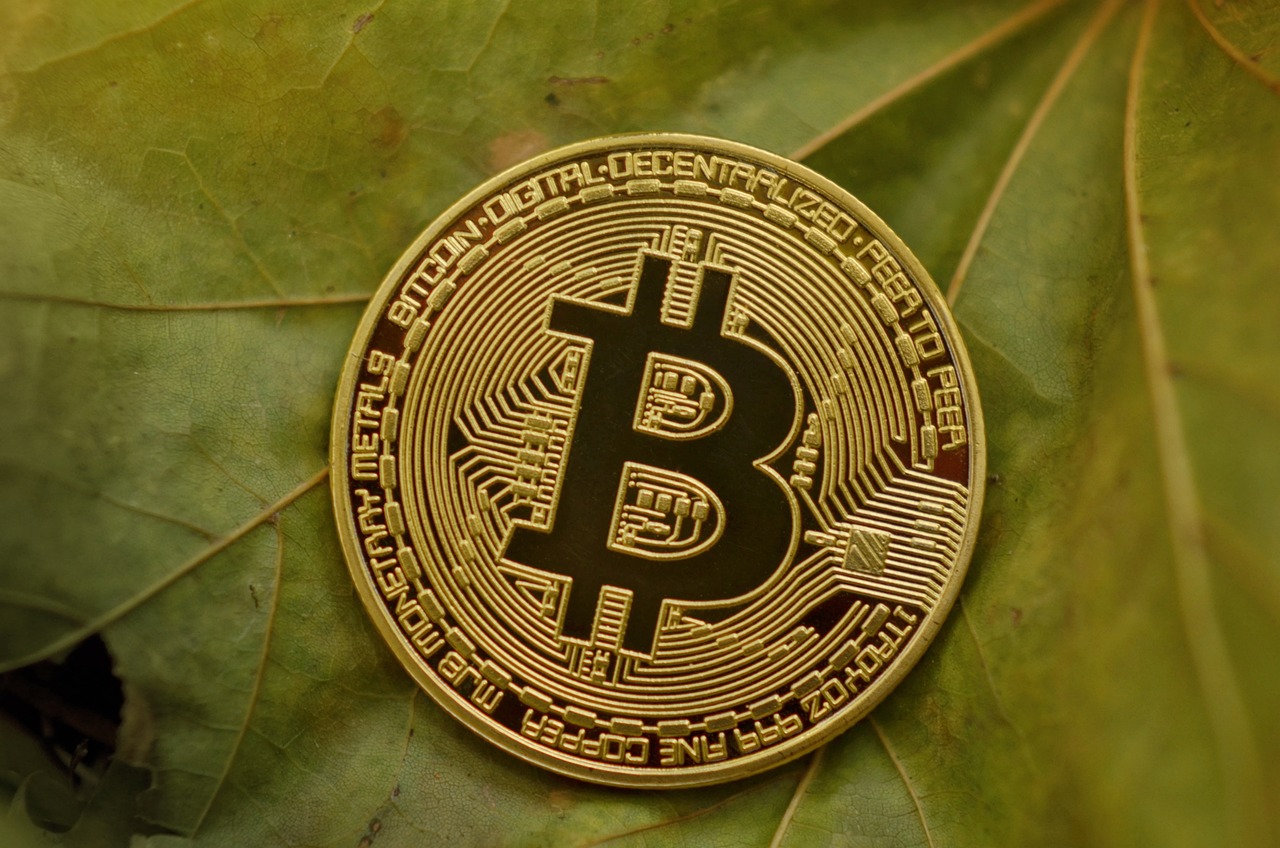Market Predictions - Key Factors Influencing Bitcoin Prices
Bitcoin, the digital gold of our time, has captured the imagination of investors and tech enthusiasts alike. But what really drives its price? Understanding the key factors influencing Bitcoin prices is essential for anyone looking to navigate the tumultuous waters of cryptocurrency investment. From market sentiment to regulatory influences, technological advancements, and macroeconomic trends, each element plays a crucial role in shaping Bitcoin's value. In this article, we will dive deep into these factors, helping you make informed decisions in your investment journey.
Market sentiment is like the weather of the financial world; it can change on a dime and has a profound impact on Bitcoin price fluctuations. When investors are feeling bullish, they are more likely to buy, pushing prices up. Conversely, when fear and uncertainty creep in, selling can create a downward spiral. Social media platforms and news outlets amplify these sentiments, often leading to rapid price changes. For instance, a single tweet from a high-profile figure can send Bitcoin soaring or plummeting, demonstrating just how sensitive the market is to public perception.
Regulatory frameworks are another significant factor affecting cryptocurrency markets. Governments around the world are grappling with how to manage the rise of digital currencies, and their decisions can create substantial volatility in Bitcoin prices. For instance, when China announced a crackdown on Bitcoin mining, the market reacted sharply, leading to a significant drop in prices. Understanding these regulations is crucial for predicting Bitcoin's future. In the next sections, we will explore global regulatory trends, the impact of legalization, and tax implications.
Different countries have taken varied approaches to cryptocurrency regulation, creating a patchwork of rules that can impact market stability and investor confidence. For example, while the United States has been relatively open to Bitcoin, countries like India have proposed strict regulations, leading to uncertainty among investors. Here’s a quick look at how different regions are approaching cryptocurrency:
| Country | Regulatory Stance |
|---|---|
| United States | Open with evolving regulations |
| China | Strict crackdown on mining and trading |
| India | Proposed stringent regulations |
| European Union | Developing comprehensive regulations |
The legalization of cryptocurrencies in various regions can lead to increased adoption and confidence among investors. When a country recognizes Bitcoin as a legitimate asset, it often results in a surge of institutional investment, which can drive prices higher. However, this legalization can also come with regulations that might limit certain activities, creating a double-edged sword for investors.
Tax regulations surrounding Bitcoin trading can significantly influence investor behavior. Different jurisdictions have varying tax policies that can impact trading volumes. For instance, capital gains tax in the United States can deter short-term traders, while countries with more favorable tax treatment may attract more investors. Understanding these tax implications is crucial for anyone involved in Bitcoin trading.
Technological improvements, such as blockchain upgrades and security enhancements, can also influence Bitcoin's price. Innovations like the Lightning Network, which aims to make transactions faster and cheaper, can enhance user experience and increase adoption rates. When investors see Bitcoin evolving and improving, it can boost their confidence, pushing prices higher.
Broader economic conditions, including inflation and interest rates, play a significant role in Bitcoin prices. As traditional currencies face inflationary pressures, many investors turn to Bitcoin as a hedge against currency devaluation. This trend has been particularly notable during economic downturns when people seek alternative stores of value.
Historically, periods of high inflation have driven investors towards Bitcoin, viewing it as a safe haven. For example, during the COVID-19 pandemic, many turned to Bitcoin as central banks printed money, leading to fears of inflation. This behavior often results in increased demand, pushing prices higher.
Interest rates can significantly influence investment choices, including cryptocurrencies. When interest rates are low, investors may seek higher returns in volatile assets like Bitcoin. Conversely, rising interest rates may lead to a shift back to safer investments, potentially causing Bitcoin prices to drop. Understanding these dynamics can help investors anticipate market movements.
- What factors influence Bitcoin prices the most? Market sentiment, regulatory changes, technological advancements, and macroeconomic conditions are key influencers.
- How does regulation impact Bitcoin? Regulatory decisions can create volatility; positive regulations can boost prices, while negative ones can lead to declines.
- Is Bitcoin a good hedge against inflation? Many investors view Bitcoin as a store of value, especially during inflationary periods.

Market Sentiment Analysis
Market sentiment is like the pulse of the cryptocurrency world; it reflects the collective emotions and attitudes of investors towards Bitcoin. Just as a sudden storm can send waves crashing on the shore, shifts in sentiment can cause Bitcoin prices to soar or plummet in a matter of hours. Understanding this emotional landscape is crucial for anyone looking to navigate the tumultuous waters of Bitcoin investing.
Investor emotions are often influenced by a variety of factors, including news coverage, social media trends, and even celebrity endorsements. For instance, when a well-known figure tweets positively about Bitcoin, it can create a wave of enthusiasm that drives prices up. Conversely, negative news—such as security breaches or regulatory crackdowns—can lead to panic selling, resulting in sharp declines. This phenomenon highlights how susceptible Bitcoin is to the whims of public perception.
To better illustrate the impact of market sentiment, consider the following key elements:
- News and Media Coverage: Headlines can sway investor confidence rapidly. For example, a positive report on Bitcoin adoption by a major company can spark a buying frenzy.
- Social Media Influence: Platforms like Twitter and Reddit serve as echo chambers for investor opinions. Viral posts can create a bandwagon effect, leading many to jump in or out of the market.
- Fear of Missing Out (FOMO): As prices rise, the fear of missing out can compel investors to buy in, further driving up prices. This can create a bubble if not grounded in fundamental value.
- Market Manipulation: Unfortunately, the crypto space is not immune to manipulation. Large holders, often referred to as "whales," can create artificial price movements that mislead average investors.
Moreover, sentiment can be measured through various indicators. Tools like the Fear and Greed Index track market emotions by analyzing volatility, market momentum, and social media activity. When the index shows extreme fear, it often signals a buying opportunity, while extreme greed may indicate a market correction is on the horizon.
In essence, keeping a pulse on market sentiment is not just beneficial; it’s essential for making informed investment decisions. Like a skilled sailor reading the winds, savvy investors can use sentiment analysis to anticipate market movements and adjust their strategies accordingly. By understanding the emotional triggers that lead to buying or selling, investors can position themselves to capitalize on opportunities and mitigate risks.

Regulatory Influences
Regulatory frameworks significantly affect the cryptocurrency markets, and Bitcoin is no exception. As a digital asset that operates outside traditional banking systems, Bitcoin's value and stability are often influenced by the actions and policies of governments around the world. Imagine a seesaw; on one side, you have Bitcoin's market value, and on the other, you have regulatory decisions. A shift in regulations can tilt the balance dramatically, leading to increased volatility and uncertainty.
In recent years, we have witnessed a wave of regulatory scrutiny aimed at cryptocurrencies. Governments are grappling with how to classify Bitcoin—should it be treated as a currency, a commodity, or something else entirely? This ambiguity can lead to hesitance among potential investors. For instance, when countries like China announced crackdowns on crypto trading and mining, Bitcoin prices plummeted, demonstrating just how sensitive the market is to regulatory news.
Moreover, the potential for future regulatory developments adds another layer of complexity. Countries that are more open to embracing cryptocurrencies, such as El Salvador with its Bitcoin adoption as legal tender, can create a more favorable environment for investment. On the flip side, nations that impose stringent regulations can stifle innovation and drive investors away. This tug-of-war between acceptance and restriction is a crucial factor in predicting Bitcoin's future price movements.
Understanding global regulatory trends is vital for predicting Bitcoin's future. Different countries adopt varying approaches to cryptocurrency regulation, which can lead to significant disparities in market behavior. For example, while the European Union is working towards a comprehensive regulatory framework to ensure consumer protection and market integrity, countries like India have oscillated between outright bans and proposals for regulation.
These differing regulatory landscapes can create a patchwork of compliance requirements for businesses operating in the crypto space. Investors need to be aware of the countries that are leading the charge in crypto regulation and those that are lagging. This awareness can help them make informed decisions about where to invest their money. Below is a summary of how different regions are approaching cryptocurrency regulation:
| Region | Regulatory Approach | Impact on Bitcoin |
|---|---|---|
| United States | Mixed; some states embrace crypto, others impose strict regulations | Volatility due to varying state laws |
| European Union | Developing a comprehensive regulatory framework | Potential for increased stability and investor confidence |
| China | Crackdowns on mining and trading | Significant price drops and market uncertainty |
| El Salvador | Legalized Bitcoin as legal tender | Increased adoption and positive market sentiment |
The legalization of cryptocurrencies in certain regions can lead to increased adoption. When a government recognizes Bitcoin as a legitimate form of currency, it sends a strong signal to investors and businesses alike. This kind of endorsement can bolster confidence and encourage more people to enter the market.
For instance, after El Salvador's decision to adopt Bitcoin as legal tender, there was a surge in interest in cryptocurrency across Central America. However, it's essential to note that legalization can also come with regulatory strings attached. Rules around usage, taxation, and compliance can create new challenges for investors and businesses.
Tax regulations surrounding Bitcoin trading can influence investor behavior significantly. Different countries have different tax policies regarding cryptocurrency transactions, which can affect trading volumes and overall market dynamics. For example, in the U.S., the IRS treats Bitcoin as property, meaning that capital gains tax applies to its sale. This can discourage short-term trading and encourage long-term holding, impacting market liquidity.
On the other hand, countries that offer tax incentives for cryptocurrency investments can attract more investors, thereby increasing market activity. Understanding these tax implications is crucial for anyone looking to invest in Bitcoin, as they can have a direct impact on the net returns of their investments.
In summary, regulatory influences are a double-edged sword in the world of Bitcoin. While they can create opportunities for growth and stability, they can also introduce significant risks and uncertainties. Staying informed about regulatory trends and implications can help investors navigate this complex landscape and make more informed decisions.
- What are the main factors influencing Bitcoin prices?
Market sentiment, regulatory influences, technological advancements, and macroeconomic factors are key elements that affect Bitcoin prices. - How do regulations impact Bitcoin trading?
Regulations can create volatility in the market, affecting investor confidence and trading volumes. - What is the significance of global regulatory trends?
Different countries' approaches to cryptocurrency regulation can lead to varying levels of market stability and investor confidence. - How do tax implications affect Bitcoin investors?
Tax regulations can influence trading behavior and overall market dynamics, impacting potential returns for investors.

Global Regulatory Trends
Understanding is crucial for anyone looking to navigate the unpredictable waters of Bitcoin investment. The landscape of cryptocurrency regulation is constantly evolving, with different countries taking varying approaches to how they handle Bitcoin and other digital currencies. Some nations are embracing cryptocurrencies with open arms, while others remain skeptical or outright hostile. This divergence can create significant volatility in Bitcoin prices as investors react to news and developments from different parts of the world.
For instance, countries like El Salvador have taken bold steps by adopting Bitcoin as legal tender, which has not only boosted local adoption but also sent ripples through the global market. In contrast, nations such as China have imposed strict regulations, leading to crackdowns on mining operations and trading activities. This kind of regulatory uncertainty can cause investors to feel anxious, leading to sudden price drops or surges based on news cycles.
Furthermore, the regulatory environment is not just about what is currently in place; it's also about what might come next. Investors should keep an eye on upcoming legislation and government discussions regarding cryptocurrency. For example, the European Union is working on a comprehensive regulatory framework that could standardize how cryptocurrencies are treated across member states. Such regulations could either enhance market stability or introduce new challenges depending on their nature.
To give you a clearer picture, here's a brief overview of how different regions are approaching cryptocurrency regulation:
| Region | Regulatory Approach | Impact on Bitcoin |
|---|---|---|
| United States | Fragmented; states have different regulations | Creates uncertainty but also innovation |
| European Union | Developing a unified regulatory framework | Potential for increased stability |
| China | Strict bans on trading and mining | Negative impact on global market sentiment |
| El Salvador | Legalization of Bitcoin as currency | Increased adoption and market interest |
In summary, the global regulatory landscape is a complex tapestry that can significantly influence Bitcoin's market performance. Investors must remain vigilant and informed, not only about their local regulations but also about international trends. The interplay between regulation and market sentiment is intricate, and understanding this relationship can provide valuable insights into future price movements.
- What are the main factors influencing Bitcoin prices?
Bitcoin prices are influenced by market sentiment, regulatory changes, technological advancements, and macroeconomic conditions.
- How does regulation affect Bitcoin?
Regulation can create volatility in Bitcoin prices by affecting investor confidence and market stability.
- What countries are leading in cryptocurrency regulation?
Countries like El Salvador and the European Union are taking significant steps towards establishing clear regulatory frameworks.
- Why is market sentiment important?
Market sentiment reflects the emotions and perceptions of investors, which can drive buying and selling behaviors, impacting prices.

Impact of Legalization
The legalization of cryptocurrencies is a game-changer in the world of digital assets, particularly for Bitcoin. When a country embraces Bitcoin through legal frameworks, it often results in a surge of interest and investment, akin to opening the floodgates for a new wave of financial innovation. This newfound legitimacy can bolster investor confidence, leading to increased demand and, ultimately, a rise in prices. But what does this really mean for the market?
For instance, consider the recent developments in regions like El Salvador, where Bitcoin was recognized as legal tender. This landmark decision not only attracted attention from the global media but also prompted a significant influx of investments. The move signaled to other nations that Bitcoin could be a viable alternative to traditional currencies, which in turn encouraged businesses to adopt it as a means of transaction. As a result, we witnessed a notable uptick in Bitcoin's market value. However, the impact of legalization isn't always positive. In some cases, it can lead to increased regulatory scrutiny, which might create uncertainty among investors.
Moreover, the effects of legalization can vary significantly depending on the specific regulations implemented. For example, countries that adopt a pro-crypto stance by establishing clear guidelines for trading and taxation tend to foster a more stable market environment. Conversely, nations that impose strict regulations or outright bans can stifle innovation and drive investors to seek more favorable conditions elsewhere. This creates a ripple effect, influencing not just local markets but also the global cryptocurrency landscape.
To illustrate the diverse impacts of legalization, let's examine a few countries and their approaches:
| Country | Legal Status of Bitcoin | Impact on Market |
|---|---|---|
| El Salvador | Legal Tender | Increased adoption and investment |
| China | Ban on Trading | Market downturn and exodus of investors |
| United States | Regulated | Stable growth with investor confidence |
As we can see from the table, the legal status of Bitcoin in different countries directly correlates with its market dynamics. In places where Bitcoin is embraced, we often see a flourishing ecosystem that encourages innovation, whereas in regions with stringent regulations, the opposite is true. This creates an intriguing landscape for investors who must navigate the complexities of international law and market sentiment.
In conclusion, the impact of legalization on Bitcoin prices is multifaceted and can lead to both opportunities and challenges. Understanding these dynamics is crucial for investors looking to make informed decisions in the ever-evolving cryptocurrency market. As more countries consider the legalization of Bitcoin, it will be fascinating to see how these developments shape the future of digital currencies.
- What is the significance of Bitcoin legalization? Legalization can enhance investor confidence, leading to increased adoption and price stability.
- How do regulations affect Bitcoin's market? Regulations can either promote growth by providing clarity or hinder it through restrictions.
- Which countries have legalized Bitcoin? Countries like El Salvador and the United States have adopted favorable regulations, while others like China have imposed bans.

Tax Implications
The world of cryptocurrency is not just about trading and investing; it also involves navigating a complex web of tax regulations that can significantly influence investor behavior. As Bitcoin continues to gain traction, understanding the of trading this digital asset becomes increasingly vital. For instance, in many countries, Bitcoin is treated as property for tax purposes, meaning that any profit made from selling it is subject to capital gains tax. This can create a substantial financial burden for traders, especially during periods of high volatility.
Moreover, tax regulations can vary widely from one jurisdiction to another. In the United States, the Internal Revenue Service (IRS) has issued guidelines that require taxpayers to report their cryptocurrency holdings and any gains or losses incurred. Failure to comply can lead to hefty fines and even legal consequences. On the other hand, some countries, like Germany, have a more favorable tax treatment for cryptocurrencies, where profits from Bitcoin held for over a year may be tax-free. This discrepancy in regulations can affect where investors choose to trade and invest, potentially leading to an influx of capital in regions with more favorable tax laws.
In addition to capital gains tax, investors should also be aware of other potential tax implications, such as income tax on Bitcoin earned through mining or staking. For example, any Bitcoin received as payment for goods or services is considered taxable income at the fair market value on the date received. This can complicate matters for freelancers and businesses that accept Bitcoin, as they must keep meticulous records to ensure compliance with tax laws.
To illustrate the impact of tax implications on trading behavior, consider the following table that outlines different tax rates for Bitcoin in select countries:
| Country | Tax Treatment | Capital Gains Tax Rate |
|---|---|---|
| United States | Property | 0% - 20% (depending on income) |
| Germany | Property (tax-free after 1 year) | 0% - 26.375% |
| United Kingdom | Property | 10% - 20% |
| Australia | Property | 0% - 45% (depending on income) |
As we can see, the tax landscape for Bitcoin is anything but uniform. This inconsistency can lead to strategic decisions among investors, as they may choose to relocate their trading activities to jurisdictions with lower tax burdens. Therefore, it’s essential for anyone involved in Bitcoin trading to stay informed about local tax laws and consider consulting a tax professional to navigate this intricate system effectively.
Ultimately, the of Bitcoin trading can have a profound impact on market dynamics. As regulations evolve and more countries establish clear guidelines, we may see shifts in investor behavior, which could influence Bitcoin's market value. Understanding these tax considerations is not just about compliance; it's about making informed decisions that align with one's financial goals.
- What are the tax implications of trading Bitcoin?
Tax implications vary by country, but generally, profits from Bitcoin trading are subject to capital gains tax. It's crucial to report any gains or losses accurately.
- Do I have to pay taxes on Bitcoin received as payment?
Yes, any Bitcoin received as payment is considered taxable income and must be reported at its fair market value on the date received.
- How can I minimize my tax liability on Bitcoin?
Consider holding Bitcoin for over a year in jurisdictions where long-term capital gains are taxed at a lower rate, and keep detailed records of all transactions.

Technological Advancements
In the fast-paced world of cryptocurrency, play a pivotal role in shaping Bitcoin's market dynamics. As the saying goes, “technology is the backbone of innovation,” and this holds true for Bitcoin as well. From blockchain upgrades to enhanced security protocols, each innovation can significantly impact investor confidence and market adoption rates.
One of the most notable advancements in the Bitcoin ecosystem is the implementation of the Lightning Network. This layer-2 scaling solution allows for faster and cheaper transactions, making Bitcoin more practical for everyday use. Imagine trying to buy your morning coffee with Bitcoin; if the transaction takes too long or costs too much, it defeats the purpose. The Lightning Network addresses this issue by enabling instant transactions, which can lead to greater adoption among merchants and consumers alike.
Moreover, advancements in security technologies are crucial for fostering trust in Bitcoin. As cyber threats evolve, so too must the measures to protect digital assets. Innovations such as multi-signature wallets and hardware wallets have emerged to enhance security. These technologies ensure that even if one key is compromised, the funds remain safe, thus instilling confidence among investors who might be hesitant due to past hacks and breaches in the crypto space.
Additionally, the development of smart contracts on the Bitcoin network could revolutionize how transactions are conducted. While Ethereum is often the go-to platform for smart contracts, Bitcoin's integration of similar functionalities could lead to new applications and use cases, further driving demand. For instance, imagine a world where real estate transactions could be executed automatically through smart contracts on the Bitcoin blockchain, eliminating the need for intermediaries and reducing costs.
Furthermore, the rise of decentralized finance (DeFi) platforms is another technological trend influencing Bitcoin's price. DeFi aims to recreate traditional financial systems, such as lending and borrowing, in a decentralized manner. As these platforms gain traction, they often utilize Bitcoin as collateral, which can lead to increased demand and, consequently, higher prices. It’s akin to a snowball effect—more usage leads to more demand, which drives prices up.
Finally, let’s not forget the role of mining technology. The efficiency of Bitcoin mining operations directly affects the supply side of the equation. As miners adopt more advanced hardware, they can produce Bitcoin at a lower cost, which can influence market prices. If mining becomes too costly due to energy prices or hardware expenses, it may lead to a decrease in supply, thereby driving prices up. Conversely, if mining becomes too easy and the market is flooded with Bitcoin, prices may plummet.
In summary, technological advancements are not just a side note in the Bitcoin narrative; they are a fundamental component that can dictate market behavior. Investors need to keep an eye on these developments, as they can provide insights into future price movements. As we continue to witness innovation in the cryptocurrency space, the potential for Bitcoin to evolve and adapt remains vast, making it an exciting asset for both seasoned investors and newcomers alike.
- What is the Lightning Network? - A layer-2 scaling solution for Bitcoin that allows for faster and cheaper transactions.
- How do smart contracts work on Bitcoin? - Smart contracts automate transactions on the blockchain, reducing the need for intermediaries.
- Why is mining technology important for Bitcoin? - It affects the supply of Bitcoin and can influence market prices based on production costs.
- What role does security play in Bitcoin's adoption? - Enhanced security measures build trust among users, encouraging more people to invest in and use Bitcoin.

Macroeconomic Factors
When it comes to understanding the price dynamics of Bitcoin, one cannot overlook the impact of . These broader economic conditions, such as inflation, interest rates, and even geopolitical events, play a pivotal role in shaping investor sentiment and market behavior. For instance, during periods of high inflation, many investors tend to seek alternative assets that can preserve their purchasing power. This is where Bitcoin often comes into play, being viewed as a digital gold or a hedge against inflation. The allure of Bitcoin as a store of value becomes particularly strong when traditional currencies start to lose their value. In this context, Bitcoin's fixed supply — capped at 21 million coins — makes it an attractive option for those looking to safeguard their wealth.
Moreover, interest rates also significantly influence Bitcoin’s market performance. When central banks lower interest rates, the cost of borrowing decreases, which can lead to increased investment in riskier assets, including cryptocurrencies. Conversely, when interest rates rise, the opportunity cost of holding non-yielding assets like Bitcoin increases, which can deter investment. This relationship between interest rates and Bitcoin demand is crucial for investors to grasp, as it directly affects market liquidity and price movements. To illustrate this relationship, consider the following table:
| Interest Rate Environment | Investor Behavior | Impact on Bitcoin Prices |
|---|---|---|
| Low Interest Rates | Increased borrowing and spending | Potential price increase due to higher demand |
| High Interest Rates | Decreased borrowing and spending | Potential price decrease due to lower demand |
In addition to inflation and interest rates, other macroeconomic indicators, such as GDP growth and unemployment rates, can also influence Bitcoin prices. For instance, during economic downturns, when unemployment rises and consumer confidence wanes, people may turn to Bitcoin as a means of financial security or speculation. This shift in behavior can lead to significant price fluctuations, driven by the collective psychology of investors seeking refuge in alternative assets.
It's also worth noting that geopolitical events, such as trade wars or political instability, can create an atmosphere of uncertainty, prompting investors to consider Bitcoin as a safe haven. The decentralized nature of Bitcoin allows it to thrive even in turbulent times, making it a compelling option for those looking to hedge against traditional market risks. In essence, macroeconomic factors are not just background noise; they are integral to understanding the ebb and flow of Bitcoin's market value.
- How do inflation rates affect Bitcoin prices?
Higher inflation rates can lead to increased demand for Bitcoin as a hedge against currency devaluation, often driving prices up.
- What role do interest rates play in Bitcoin investment?
Lower interest rates typically encourage more investment in Bitcoin, while higher rates may lead to decreased demand as the opportunity cost rises.
- Can geopolitical events impact Bitcoin?
Yes, geopolitical instability can drive investors toward Bitcoin as a safe haven, impacting its price positively.

Inflation and Currency Devaluation
Inflation and currency devaluation are two economic phenomena that can significantly impact Bitcoin prices. When inflation rises, the purchasing power of traditional currencies tends to decrease, prompting investors to seek alternative stores of value. This is where Bitcoin often comes into play. Many view it as a hedge against inflation, much like gold has been historically. But why exactly does this happen?
To put it simply, when the value of a currency decreases, people become increasingly concerned about the stability of their investments. This uncertainty can lead to a surge in Bitcoin purchases, as individuals look for assets that are not tied to any government or central bank. The allure of Bitcoin lies in its decentralized nature and limited supply, which contrasts sharply with fiat currencies that can be printed at will. As more investors flock to Bitcoin during inflationary periods, the demand drives up its price, leading to a cycle that can further amplify market volatility.
Historically, we can observe this trend in various economic scenarios. For instance, during the hyperinflation in Zimbabwe in the late 2000s, many citizens turned to Bitcoin as a means of preserving their wealth. Similarly, in countries facing severe economic crises, such as Venezuela, Bitcoin adoption skyrocketed as people sought refuge from their collapsing currencies. These instances illustrate how inflation and currency devaluation can act as catalysts for Bitcoin's price surge.
Moreover, the relationship between inflation and Bitcoin isn't just anecdotal. Studies have shown a correlation between rising inflation rates and increased Bitcoin demand. For example, as inflation rates in the U.S. hit multi-decade highs in 2021, Bitcoin's price reached all-time highs, demonstrating how macroeconomic factors can influence investor behavior.
However, it's essential to consider that while Bitcoin can serve as a hedge against inflation, it is not immune to volatility. The cryptocurrency market can be influenced by a myriad of factors, including market sentiment, regulatory changes, and technological advancements. As such, investors should remain cautious and conduct thorough research before making any investment decisions.
In summary, inflation and currency devaluation can lead to increased interest in Bitcoin as a viable alternative investment. As more people lose faith in traditional currencies, they may turn to cryptocurrencies, creating a ripple effect that can drive prices higher. Understanding this dynamic is crucial for investors looking to navigate the ever-evolving landscape of cryptocurrency.
- What is the relationship between inflation and Bitcoin? Bitcoin is often viewed as a hedge against inflation, with investors turning to it when traditional currencies lose value.
- Can Bitcoin completely replace traditional currencies? While Bitcoin has gained popularity, it is unlikely to fully replace traditional currencies due to regulatory challenges and market volatility.
- How does currency devaluation affect Bitcoin prices? Currency devaluation can lead to increased demand for Bitcoin as investors seek to protect their wealth, driving up its price.
- Is Bitcoin a safe investment during inflationary periods? While many consider Bitcoin a safe haven, it is still a highly volatile asset, and investors should exercise caution.

Interest Rates and Investment Trends
When we talk about interest rates, we're diving into a world that can dramatically sway investment trends, including those in the cryptocurrency space, particularly Bitcoin. Imagine interest rates as the tide in the ocean; when they rise, they can sweep away some investments, while a drop can bring new opportunities to the shore. But how exactly does this all work?
Typically, when central banks, like the Federal Reserve in the United States, decide to increase interest rates, borrowing becomes more expensive. This can lead to a reduction in consumer spending and business investments. Investors, feeling the pinch, might look to pull their funds from riskier assets like stocks and cryptocurrencies, including Bitcoin, and funnel them into safer havens like bonds or savings accounts. The result? A potential dip in Bitcoin prices as demand wanes.
Conversely, when interest rates are low, the cost of borrowing decreases, making it more attractive for individuals and businesses to take out loans. This often leads to a surge in spending and investment, creating a favorable environment for riskier assets. In such scenarios, Bitcoin can benefit immensely as investors seek higher returns, driving up its price. In fact, during periods of low interest rates, we often see a notable uptick in Bitcoin adoption and investment as people look for alternatives to traditional savings accounts that yield minimal returns.
To illustrate this relationship, let's take a look at a simplified table that outlines the potential impacts of interest rate changes on Bitcoin investment trends:
| Interest Rate Scenario | Investor Behavior | Impact on Bitcoin |
|---|---|---|
| High Interest Rates | Reduced borrowing, cautious spending | Potential decrease in Bitcoin demand and price |
| Low Interest Rates | Increased borrowing, aggressive investing | Potential increase in Bitcoin demand and price |
It's also worth noting that interest rates can indirectly affect Bitcoin through their impact on traditional financial markets. For instance, if rising rates lead to a stock market downturn, investors might flock to Bitcoin as a hedge against market volatility. This behavior can create a surge in demand, further driving up Bitcoin's price.
Moreover, the global landscape is constantly shifting. Different countries have varying approaches to interest rates, which can create disparities in Bitcoin investment trends worldwide. For instance, countries with ultra-low interest rates may see a more robust Bitcoin market compared to those with higher rates, where investors are more risk-averse.
In conclusion, understanding the interplay between interest rates and investment trends is crucial for anyone looking to navigate the Bitcoin market effectively. As we move forward, keeping a close eye on central bank policies and economic conditions will be essential for predicting potential price movements in Bitcoin.
- How do interest rates affect Bitcoin prices?
Interest rates influence borrowing costs and investor behavior. High rates can lead to decreased demand for Bitcoin, while low rates often encourage investment in riskier assets like cryptocurrencies. - What should I watch for regarding interest rates and Bitcoin?
Keep an eye on central bank announcements and economic indicators that signal changes in interest rates, as these can directly impact Bitcoin's market performance. - Can Bitcoin be a hedge against rising interest rates?
In some cases, yes. If rising rates lead to market instability, investors might turn to Bitcoin as a store of value, potentially driving up its price.
Frequently Asked Questions
- What factors influence Bitcoin prices?
Bitcoin prices are influenced by a variety of factors including market sentiment, regulatory developments, technological advancements, and macroeconomic trends. Each of these elements can create fluctuations in demand and supply, ultimately affecting the price.
- How does market sentiment impact Bitcoin?
Market sentiment significantly affects Bitcoin prices as it reflects the emotions and perceptions of investors. When sentiment is positive, more people tend to buy Bitcoin, driving prices up. Conversely, negative sentiment can lead to panic selling, causing prices to drop.
- What role do regulations play in Bitcoin's price volatility?
Regulations can create uncertainty in the cryptocurrency market, leading to price volatility. For instance, news about potential regulatory changes can cause sharp price movements as investors react to perceived risks or opportunities.
- How do global regulatory trends affect Bitcoin?
Global regulatory trends can either bolster or hinder Bitcoin's adoption. Countries that embrace cryptocurrencies through favorable regulations often see increased market activity and investor confidence, while restrictive regulations can stifle growth and lead to price drops.
- What is the impact of technological advancements on Bitcoin?
Technological advancements, such as improvements in blockchain technology and security, can enhance Bitcoin's functionality and appeal. Innovations can lead to increased adoption and trust in the cryptocurrency, potentially driving prices higher.
- How do macroeconomic factors influence Bitcoin prices?
Macroeconomic factors like inflation and interest rates play a crucial role in Bitcoin pricing. For example, during times of high inflation, investors may turn to Bitcoin as a hedge against currency devaluation, thus increasing demand and driving prices up.
- What is the relationship between inflation and Bitcoin?
Historically, inflation has led investors to seek alternative stores of value, such as Bitcoin. As traditional currencies lose purchasing power, Bitcoin is often viewed as a more stable investment, which can lead to increased demand and higher prices.
- How do interest rates affect Bitcoin investment?
Interest rates can significantly influence investment trends, including those in cryptocurrencies. When interest rates are low, investors may seek higher returns in riskier assets like Bitcoin, increasing demand and potentially pushing prices up.



















